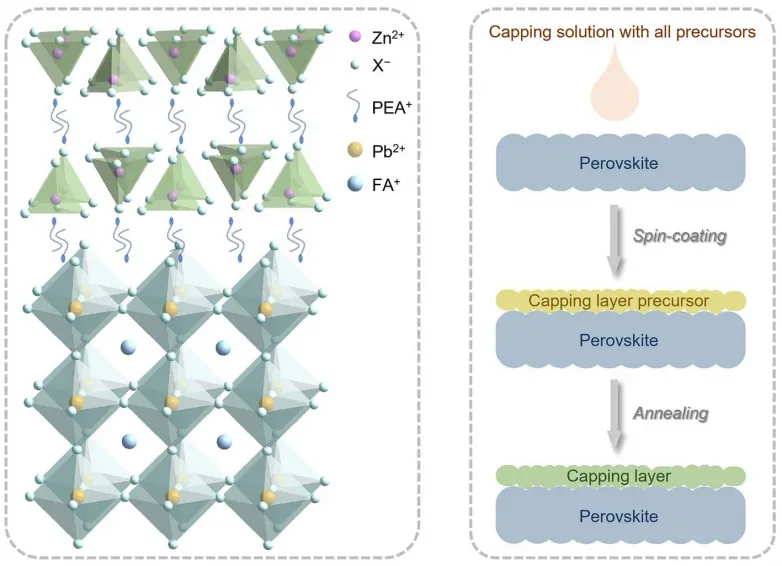NTU Singapore Scientists Develop Eco-friendly Capping Materials for Perovskite Solar Cells
- Scientists from Nanyang Technological University, Singapore (NTU Singapore) and the Institute of Materials Research and Engineering (IMRE) have found a way to stabilize perovskite solar cells using non-toxic metal-based capping materials. This paves the way for commercial use of perovskite cells, which, despite superior efficiency and lower production costs, contain lead, posing an environmental threat when decomposed. The researchers used the full precursor (FP) solution method, which allowed them to synthesize the capping layer of solar cells without lead. The zinc-based compound, PEA2ZnX4, was the most effective among the materials tested, and the process was more efficient than the half precursor (HP) method.

What Happened?
NTU scientists discovered a method to manufacture non-toxic metal-based capping layers for perovskite solar cells. The study was published in Nature Energy, and the researchers used the FP solution method to synthesize a protective capping layer that does not contain lead. The zinc-based compound, PEA2ZnX4, was found to be the most effective among the other materials tested.
Who Was Involved?
Scientists from Nanyang Technological University, Singapore (NTU Singapore) and the Institute of Materials Research and Engineering (IMRE) at the Agency for Science, Technology and Research (A*STAR) in Singapore conducted the study. It was led by Professor Sum Tze Chien, Director of the Institute of Advanced Studies at NTU and Associate Dean (Research) of NTU's College of Science, and Professor Lam Yeng Ming, Chair of NTU's School of Materials Science and Engineering.
When Did It Happen?
The study was published in February 2023.
Where Did It Happen?
The research was conducted by scientists from Nanyang Technological University and the Institute of Materials Research and Engineering in Singapore.
Why Does It Matter?
Perovskite solar cells have the potential to replace silicon solar cells due to their superior performance, efficiency, and lower production costs. However, they contain lead, which can pollute the environment when decomposed. The use of non-toxic metal-based capping materials makes perovskite solar cells eco-friendly and commercially viable. The study's findings bring perovskite solar cells one step closer to commercialization.
What's Next?
The use of non-toxic metal-based capping materials for perovskite solar cells is still in the experimental stage. Further research and testing are required to develop a viable production method for commercial use. However, the study's findings show promising results that could lead to the development of eco-friendly solar cells in the future.
Also read
